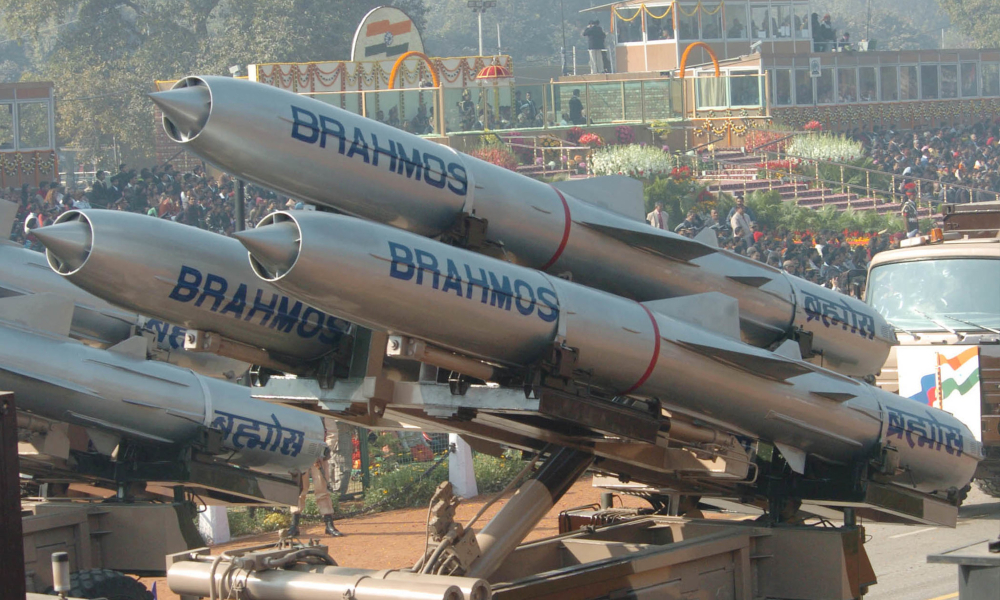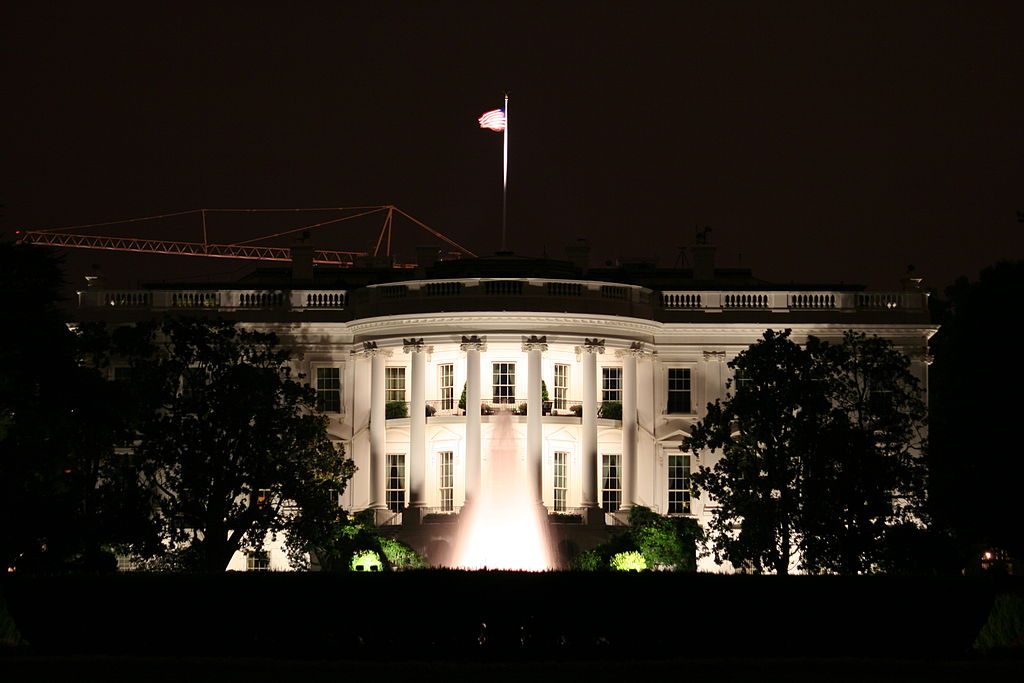The State of Nuclear Instability in South Asia: India, Pakistan, and China

Published by The Lawfare Institute
in Cooperation With

Editor’s Note: The India-Pakistan nuclear dynamic has long been a concern, indeed a nightmare, for security analysts. The Korbel School’s Debak Das argues that the growing India-China rivalry, and China’s growing nuclear competition with the United States, add new dimensions to this long-standing problem and create additional risks for nuclear escalation.
Daniel Byman
***
Prime Minister Narendra Modi’s state visit to Washington, D.C., in June has prompted a debate on the United States’ bet on India as a military partner to check China in the Indo-Pacific. A key part of this debate is the nuclear relationship among India, China, and Pakistan. Twenty-five years ago—in May 1998—India and Pakistan both tested nuclear weapons, initiating a trilateral nuclear rivalry in Southern Asia.
Since then, these three states have steadily increased their numbers of nuclear warheads and their fissile material production. The uneasy strategic stability in the region is also marked by technological advances in missile technology, counterforce capabilities, and an expanding spectrum of nuclear delivery vehicles available to every side. India and China’s repeated border clashes along the Himalayas and broader competition in the Indo-Pacific add a layer of complexity to the problem. This rivalry has led to developments in military technology and organization—especially India’s new Integrated Rocket Force—that increase the risk of escalation in the region. Added with Pakistan’s devolving domestic political environment characterized by renewed civilian-military clashes and India’s statements about abandoning its no-first-use policy, there are a number of different pathways to nuclear instability in the region that should generate broad concern in the international community.
Increasing Vulnerability From Nuclear Modernization
Both India and Pakistan have consistently modernized their nuclear forces over the past two decades. Each is aiming to ensure that they can match each other at lower levels of escalation. These technological advancements have led to increased vulnerability for both sides at different levels of the escalation ladder. This ranges from the ability to use low-yield nuclear weapons in specific battlefields as well as being able to conduct large strategic countervalue strikes on each other’s cities.
Pakistan has adopted a strategy of “full spectrum deterrence” that allows for the use of nuclear weapons in response to low-scale conventional war, even considerably below the nuclear threshold. As a part of this strategy, Islamabad has introduced tactical/battlefield nuclear weapons with short ranges—like the Hatf IX Nasr missile, which has a 60-kilometer range. It has also built a number of ground- and air-launched nuclear-capable cruise missiles, with ranges between 350 and 700 kilometers. Pakistan also introduced its Babur-3 nuclear-capable sea-based cruise missile in 2017 after India commissioned a nuclear submarine.
India, meanwhile, has been reported to be building flexible preemptive counterforce nuclear systems. These include more precise nuclear delivery systems with short ranges, multiple independently targetable reentry vehicle systems on ballistic missiles, and a growing arsenal of cruise missiles. India is also building a new series of surface-to-surface ballistic missiles, Pralay (with a range of 150 to 500 kilometers), alongside its existing land- and sea-based cruise missiles, which have a range of 1,000 kilometers. To increase the survivability of its nuclear forces, New Delhi has built a “triad” of delivery systems with the ability to launch nuclear weapons from air-, land-, and sea-based platforms. It is reinforcing this triad with plans to build three more nuclear submarines—in addition to the one already in service, INS Arihant—presumably with the goal of eventually having a “continuous-at-sea-deterrence” patrol capability, like the navies of the United Kingdom, Russia, the United States, and France.
In their attempts to increase the vulnerability of their adversary, both India and Pakistan have increased the range of their nuclear weapons. Deterrence optimists might contend that more weapons could improve the survivability of each country’s nuclear forces, making a nuclear first strike from either side unlikely. However, if this were the goal, India and Pakistan would prioritize building countervalue weapons systems—long-range, high-yield, and dispersible—designed for an assured retaliation. Instead, the counterforce systems being built by both countries are short-range tactical nuclear weapons generally deployed in nuclear first-use doctrines. A greater number of tactical nuclear weapons has not only led to arms competition in South Asia but also promoted nuclear brinkmanship, as evidenced by the 2019 Balakot crisis, during which India conducted airstrikes in Pakistan in response to a terror attack. Additionally, the greater dispersion of low-range nuclear weapons controlled by battlefield commanders (or nuclear submarine captains) increases the risk of miscommunication, command-and-control issues, accidental use, and inadvertent escalation.
Emulating China: India’s New Integrated Rocket Force
Alongside the modernization of its nuclear weapons, India is currently restructuring its ballistic missile forces. New Delhi is creating an Integrated Rocket Force (IRF) that will contain both nuclear-capable and conventional ballistic and cruise missiles. The proposed organization of the Indian IRF is inspired by the Chinese People’s Liberation Army Rocket Force that commands both nuclear and conventional ballistic missile forces. India’s IRF is being developed largely in response to threats posed by China and is expected to give India a larger array of options to conduct “non-contact warfare” through the use of conventional ballistic and cruise missiles in stand-off strikes.
India’s creation of the IRF is a mistake. The IRF will likely place nuclear-capable and conventional ballistic missiles within the same force; this will change India’s present policy of ballistic missiles being dedicated to only carrying nuclear weapons. Using the same missiles in both conventional and nuclear roles increases the chance of inadvertent escalation. An adversary will not be able to tell if an incoming missile is armed with a nuclear weapon or a conventional payload. The inability to distinguish between an incoming conventional and nuclear strike may lead to preemptive nuclear retaliation from the other side. This could be an especially likely response for Pakistan if it considers itself to be at risk of losing its battlefield or strategic nuclear weapons.
The risk of an inadvertent missile launch is not hypothetical. In March 2022, India accidentally fired a BrahMos cruise missile into Pakistan. The missile was not armed, and Pakistan did not respond. However, given the flight time of about six minutes—in which Pakistan had to decide whether the incoming missile was armed or not—there was a high risk of a Pakistani retaliation, even before the incoming BrahMos struck land. Importantly, India has a declared conventional role for the BrahMos missile (which it co-developed with Russia), which might have had a calming influence on the Pakistani response. In a wartime environment, the response might have been different.
The lesson from this accidental launch is that nuclear and conventional missiles should be kept separate to prevent inadvertent escalation. With the IRF, it is in India’s own security interest to ensure that there is no doubt for Pakistani or Chinese forces about whether an incoming missile is armed with a nuclear weapon. It could be argued that such ambiguity might be beneficial to a state during wartime; however, during peacetime it could be an extremely dangerous strategy. While it is unclear how Pakistan will respond to India’s changing nuclear force structure, there is no doubt that it will make the Pakistani military more nervous than China’s owing to the short flight times between it and India.
China in Nuclear South Asia
In the past two decades, China’s role in South Asia has grown exponentially, especially along India’s border, which has further complicated the nuclear relationship between India and Pakistan.
Sino-Indian altercations along the Line of Actual Control (LAC) in the Himalayas, along with growing naval competition in the Indo-Pacific, have shifted India’s priorities with nuclear weapons modernization toward addressing threats from China. New Chinese missile silos and a potential significant increase in their stockpile of nuclear warheads mean that India is—and will continue to be—considerably behind China’s nuclear numbers. However, China’s nuclear buildup is directed primarily toward the United States, and few, if any, of China’s 410 warheads are aimed toward India. Nevertheless, China has outmatched India on the nuclear front since 1964. Nuclear asymmetry vis-a-vis China is not a new phenomenon for Indian strategists.
India’s development of the IRF shows that it is now seeking to match China at lower levels of escalation. However, the entanglement of nuclear and conventional roles for similar missiles aimed at the Chinese border could be dangerous. So far, both India and China have declared no-first-use policies and rely on a second-strike doctrine. But should India move away from this policy—as Indian Defense Minister Rajnath Singh has suggested it could—and introduce short-range ballistic missiles or nuclear-tipped cruise missiles, it will put itself at risk of a potential preemptive first strike from China. In other words, attempting to match China at every level of the escalation ladder and introducing “strategic ambiguity” in the military relationship will make India less secure.
Additionally, a qualitative improvement in Indian nuclear forces aimed at China will not go unnoticed by Pakistan. Islamabad will seek to qualitatively and quantitatively respond to any Indian modernization aimed at China. Indeed, what is at work in the subcontinent is not just a “trilateral nuclear competition”—it is a quadrilateral competition. China is responding to the United States’ nuclear modernization and ballistic missile defense. India is responding to China’s modernization and force expansion. And Pakistan is attempting to ensure that it does not lag behind India by maintaining some form of nuclear parity at all levels of escalation.
Devolving Domestic Politics and No First Use
In addition to expanding nuclear arsenals, both India and Pakistan face different challenges to nuclear stability from their respective domestic politics. The devolving political situation in Pakistan has created new possibilities for ways in which the government could lose command and control of its nuclear weapons. The current state of domestic political turmoil between former Prime Minister Imran Khan (and his party, Pakistan Tehreek-e-Insaf) and the military establishment under army chief General Asim Munir has sparked considerable chaos. It has led to attacks on Pakistan Army headquarters, other military installations, monuments, and a corps commander’s residence. If there is a serious civil-military tussle for power in Islamabad in coming months that divides the army along political lines, it could have implications for the command and control of nuclear weapons and their physical safety.
On the Indian side, the government’s increasing ambivalence toward its no-first-use policy is a clear threat to nuclear stability in the region. Even before it came to power in 2014, Prime Minister Narendra Modi’s Bharatiya Janata Party (BJP) had pledged to change India’s no-first-use policy amid concerns that India was lagging behind Pakistan’s nuclear diversification and introduction of tactical nuclear weapons. While India has not changed its policy yet, defense ministers keep raising the issue. In 2016, Defense Minister Manohar Parrikar asked why New Delhi should bind itself to a no-first-use policy, and then in 2019, after the BJP was elected for a second consecutive term with an overwhelming majority, Defense Minister Singh stated, “Till today, our nuclear policy is ‘no first use.’ What happens in the future depends on the circumstances.” Singh’s statement suggested that India was considering watering down its no-first-use policy and possibly revising it completely. If brought into effect, the move would lead to an arms race of first-strike nuclear delivery vehicles between India and Pakistan as each tries to outmatch the other’s capacity at every rung of the escalation ladder.
Additionally, the BJP’s use of tensions with Pakistan for electioneering has created new escalation possibilities. In 2019, before the general national elections, India chose to respond to a terror attack in Pulwama (Jammu and Kashmir) with an airstrike in Pakistan. For the first time since the 1971 war, the Indian Air Force crossed into Pakistani territory and bombed it. This was a remarkable departure from the past, crossing a line that the Indian government had avoided even during the 1999 Kargil War for fear of escalation and losing the support of the international community. The 2019 airstrike led to Pakistani retaliation, which escalated into an air battle over Kashmir between India’s and Pakistan’s air forces. Eventually, Pakistani forces shot down an Indian MiG-21 fighter aircraft. Prime Minister Modi and the BJP used the Balakot strike in election campaigns across the country, setting a dangerous precedent. India’s next national-level elections are in 2024, and it remains to be seen if the BJP will choose to use the same playbook as in 2019.
What Washington Must Not Do
Recent calls by scholars such as Ashley Tellis to arm India with thermonuclear weapons and naval nuclear reactor designs present a dangerous policy option. The logic behind the suggestion is that India’s thermonuclear test in 1998 failed and that it might not have a credible thermonuclear weapon. U.S. assistance on this front would help India match China in its bilateral nuclear competition, allowing it to better contribute to the goals of the Quadrilateral Security Dialogue nations—Japan, Australia, India, and the United States—to balance China in the Indo-Pacific.
Importantly, the suggestion ignores the effects of such a move on Pakistan’s nuclear forces. Pakistan has attempted since the 1980s to match India at every rung of the escalation ladder. It will do so again. This will lead to a substantial increase in nuclear weapons and delivery systems in the subcontinent—an outcome that is fundamentally at loggerheads with the United States’ non-proliferation policy.
Additionally, at the heart of the call to give India a thermonuclear weapons design is the assumption that India’s thermonuclear test in 1998 fizzled—meaning that it is believed to have failed to meet the expected yield. This is an unconfirmed claim. And India’s adversaries are unlikely to assume that India’s nuclear weapons will not work during wartime. It would simply be too large a gamble to take. Regardless of whether the thermonuclear test was a fizzle or not, the deterrent effects of India’s thermonuclear weapon remain intact.
Twenty-five years after the overt nuclearization of South Asia, there are enough drivers of strategic instability in the India-Pakistan-China nuclear relationship. The United States needs to be cognizant of this as it crafts an Indo-Pacific policy aimed at countering China. Indeed, it should aim to deemphasize the nuclear dimension of this competition and avoid entangling India in a four-way nuclear competition among the United States, China, India, and Pakistan.


.jpg?sfvrsn=5a43131e_9)


